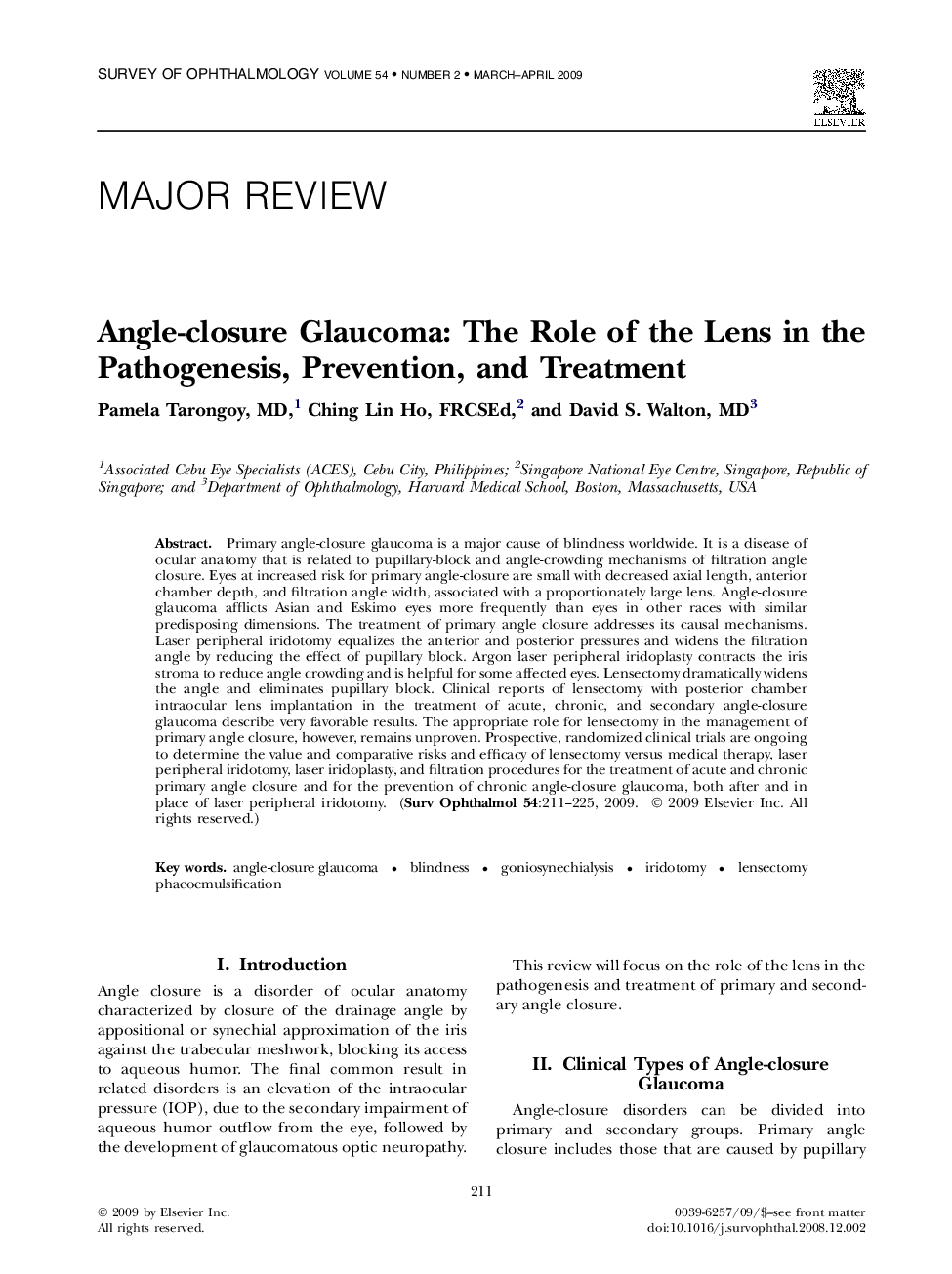| Article ID | Journal | Published Year | Pages | File Type |
|---|---|---|---|---|
| 4032948 | Survey of Ophthalmology | 2009 | 15 Pages |
Primary angle-closure glaucoma is a major cause of blindness worldwide. It is a disease of ocular anatomy that is related to pupillary-block and angle-crowding mechanisms of filtration angle closure. Eyes at increased risk for primary angle-closure are small with decreased axial length, anterior chamber depth, and filtration angle width, associated with a proportionately large lens. Angle-closure glaucoma afflicts Asian and Eskimo eyes more frequently than eyes in other races with similar predisposing dimensions. The treatment of primary angle closure addresses its causal mechanisms. Laser peripheral iridotomy equalizes the anterior and posterior pressures and widens the filtration angle by reducing the effect of pupillary block. Argon laser peripheral iridoplasty contracts the iris stroma to reduce angle crowding and is helpful for some affected eyes. Lensectomy dramatically widens the angle and eliminates pupillary block. Clinical reports of lensectomy with posterior chamber intraocular lens implantation in the treatment of acute, chronic, and secondary angle-closure glaucoma describe very favorable results. The appropriate role for lensectomy in the management of primary angle closure, however, remains unproven. Prospective, randomized clinical trials are ongoing to determine the value and comparative risks and efficacy of lensectomy versus medical therapy, laser peripheral iridotomy, laser iridoplasty, and filtration procedures for the treatment of acute and chronic primary angle closure and for the prevention of chronic angle-closure glaucoma, both after and in place of laser peripheral iridotomy.
